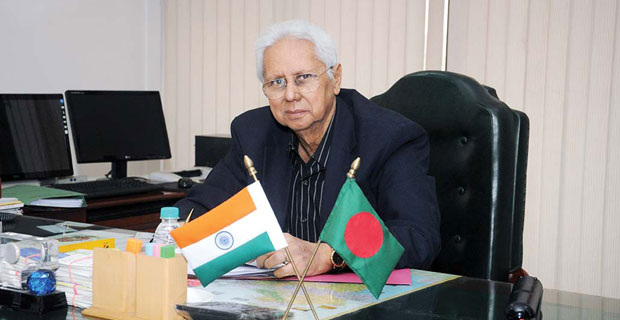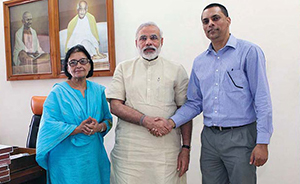“Our bilateral relations have been termed the best ever”
On the eve of our Forty Seventh Anniversary of our Independence and National day, permit me to recall, with deep appreciation ...
On the trade and investment front, several Indian businesses have set up base in Bangladesh in recent times. What makes Bangladesh an attractive destination for investments, according to you?
Bangladesh is emerging as one of the fastest growing economies in the world. The purchasing power of our people, particularly of the middle class, is increasing and Bangladesh is emerging as a potential market for the investors. We also have a vast pool of hard working labor. Today Bangladesh’s GDP growth rate and achievements in key economic sectors are highly impressive. Naturally, we should strive to upgrade, diversify and balance our trade ties. Bangladesh imported goods worth US$5.4 Billion and exported goods worth US$ 689.60 Million in FY 2015-16. We seek substantial investment from your investors in three specially designated Indian Economic Zones in Mongla, Bheramara and Mirsarai to broaden our exportable base. The most practical course of action would be to set up series of “buy-back” projects, where Indian big companies could set up their industries in Bangladesh and the produces could be re-exported to India. To this end, several Indian mega companies like Hero-Honda, Tata group or CEAT Tyre companies have set up such projects in Bangladesh. These are small projects but they mark the beginning of a much-needed process. Incidentally, such projects do exist in US-Canada and US-Mexico borders.
Please tell us about the increased connectivity between our two nations, both by surface and sea.
Connectivity is a vital area of cooperation between our two countries. South Asia is the least connected region in the world and whatever connectivity was established during the colonial period, were disrupted in the past. Currently, we are working to restore road, rail, and coastal shipping links that had existed prior to their disruption during 1965 Indo-Pakistan war. At the same time, new land ports and better infrastructure are built to facilitate greater trade. Building a bridge over Feni river, establishment of rail connectivity between Akhaura and Agartala, and development of Ramgarah-Subroom may look like small steps but those will be “game changers” and will directly connect North-East Indian States with the Chittagong port. We have opened up new inter-country bus routes to connect northeast and West Bengal with Bangladesh. Both governments are currently working on the restoration of eight railway links between West Bengal and North Eastern India with Bangladesh which were snapped during 1965 Indo-Pakistan war. During recent years, our people have achieved much higher purchasing power and hence air connectivity between Bangladesh and other North-Eastern states should be considered to facilitate people-to-people contact.
What is the quantum of Imports from Bangladesh to India? What are the major items of import?
The volume of bilateral trade has simply grown over the past seven years, though the balance of trade is still largely in India’s favour (Approx. US$ 6.5 Billion against US$ 658 Million). India, however, has allowed duty-free and quota-free access to all Bangladeshi items to the Indian market except for a few items on the SAFTA negative list. Main items that Bangladesh exports to India are Woven Garments, Knitwear, Home Textile, Agri-Products, Frozen Food, Leather & Leather Products, Footwear, Raw Jute, Jute Goods, Bicycle and Others.











Comments.